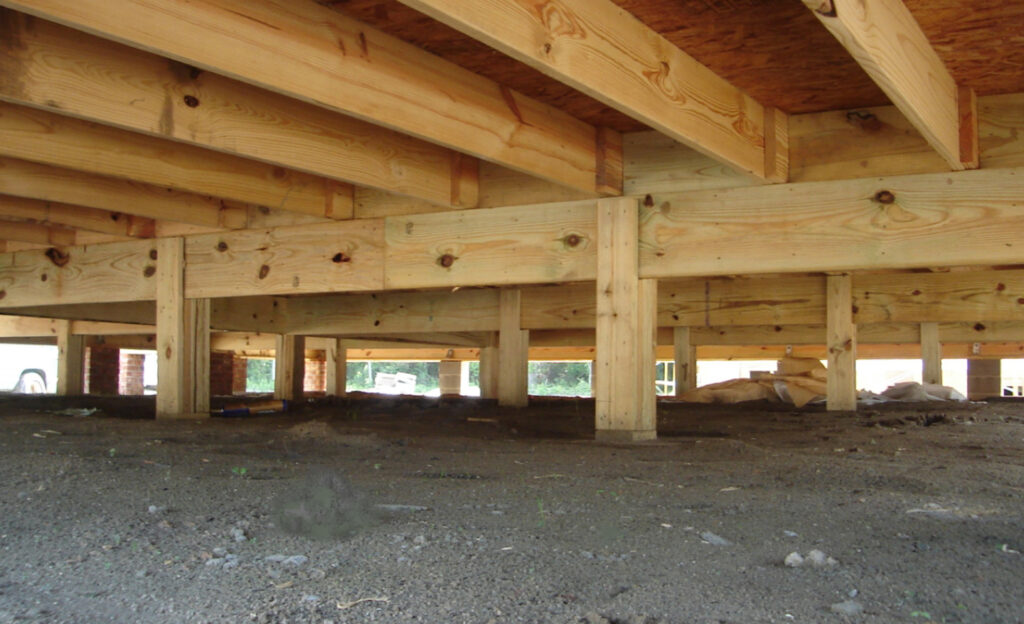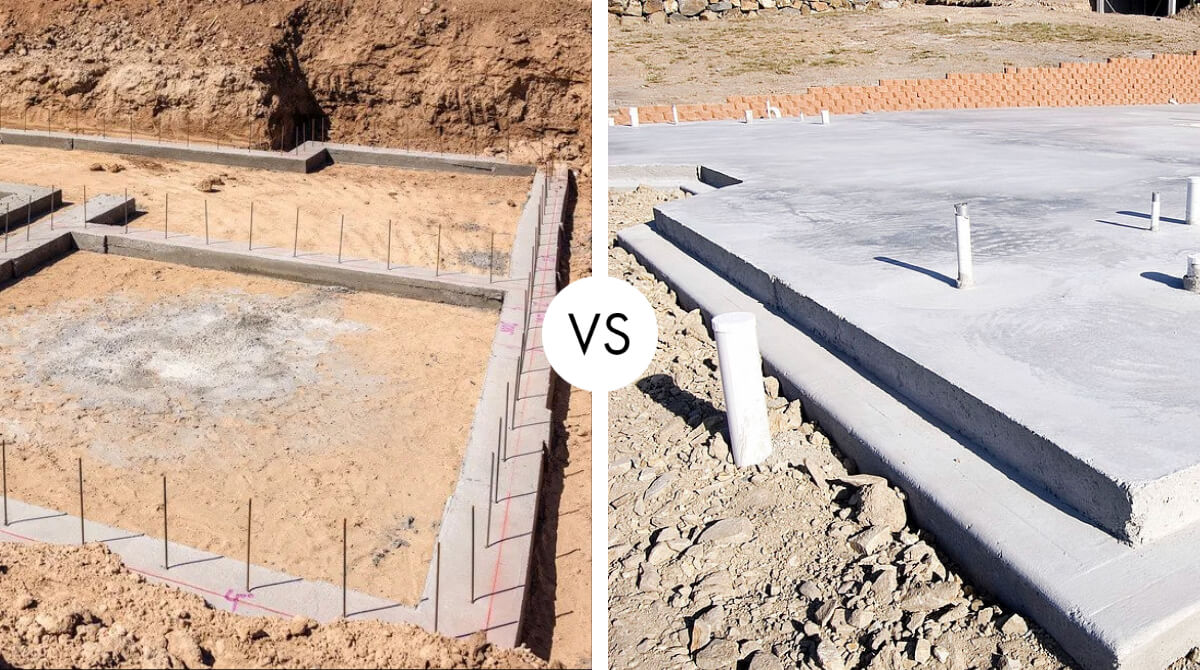Introduction
If you’re a Texas homeowner, chances are your house is either built with a pier and beam or slab on grade foundation. These foundation systems are both proven and popular throughout the Lone Star state. If you’re curious about the details about how each of these systems support your home, the pros and cons of each and how each system is repaired, keep reading.

Pier and Beam Foundations
As the name suggests, a pier and beam foundation supports your home by using either brick, stone or concrete piers and wooden beams. Piers are extended deep down into the earth, resting on stones. The beams that support your home rest on the piers. Unlike slab on grade foundations which sit directly on the ground, pier and beam foundations are usually elevated 18-24” above ground level. Pier and beam foundation homes were once very popular in Texas, however advances in concrete technology have made slab on grade foundations an equally viable option. If your home was built prior to World War II, it is very likely it sits on a pier and beam foundation.

Advantages of Pier and Beam Foundations
There are several advantages to pier and beam foundations, including:
- Because they are built above ground level, homes with a pier and beam foundation are less susceptible to flooding
- Homes with a pier and beam foundation typically provide easier access to plumbing and electrical lines, making maintenance and repairs easier
- Homes built on a pier and beam foundation are very strong and don’t shift as much due to underlying soil conditions as other foundation systems
- Repairs and adjustments to pier and beam homes are typically easier and less costly than slab on grade foundation systems. This is because adjustments can be made with shims as opposed to drilling new piers, as is often necessary with slab on grade foundation systems
Disadvantages
There are a few downsides of pier and beam foundation systems, including:
- Pier and beam foundations are often more expensive than slab on grade foundation systems
- Because of the crawlspace, pier and beam homes are more susceptible to pests (insects, rodents, etc). These pests can spread disease and can potentially damage electrical wiring, water lines and the beams that support the home.
- In some circumstances, pier and beam homes can be more susceptible to dampness. As with all homes, it is important to have water drain away from the home and to consider a drainage system if necessary.
- Flooring on homes built with a pier and beam foundation system have less support than in homes with a slab on grade foundation. As a result creaking or squeaking floor boards are more common. In addition flooring in a pier and beam home may be colder in winter months due to the air exchange in the crawl space.
Pier and Beam Foundation Repair
While pier and beam foundation systems are generally designed to last 75 years or more, homeowners should call a foundation repair professional if any cracks in the foundation, water damage in the crawl space, uneven floors or doors or windows that don’t open or close properly are observed. During an evaluation, your evaluator will be looking for issues including:
- Shifting beams
- Collapse of one or more piers
- Improperly spaced piers
- Beam decay
Depending on the extent and severity of the damage, your evaluator may recommend any or all of the following techniques to restore your foundation and secure your home:
- For smaller issues, reshimming your foundation to make it level may solve the problem. Reshimming involves making small adjustments to level specific areas of your foundation. This is often a relatively quick, easy and inexpensive repair.
- Another repair method is to rebuild or add pier stacks. This is a great technique if your original piers have disintegrated or are no longer functioning as designed.
- If your shaker sills and floor joists are rotting, they can and should be replaced to restore your home to its original specifications. The complexity this type of repair depends on the size and location of the damaged sills

Slab on Grade Foundations
Slab on grade (also called slab on concrete, floating slab or concrete slab) foundations rest directly on the ground. The foundation is outlined using a mold and concrete is poured into the mold, creating the structure on which your home is built.
Advantages
Slab on grade foundations offer several advantages, including:
- Slab on grade foundations are easier and less expensive to build compared to pier and beam foundation systems
- Slab on grade foundation systems can be very sturdy if constructed properly
- Slab on grade foundations are less susceptible to pest infestations than pier and beam foundation systems

Disadvantages
Compared to pier and beam foundation systems, slab on grade foundations do have several disadvantages, including:
- Slab on grade foundations have less access to utility and electrical lines, which can make maintenance and repair more difficult
- Because of their lower elevation, slab on grade homes can be more susceptible to flooding than their pier and beam counterparts
- Extensions, renovations and remodels on slab homes are more difficult
- Slab on grade homes are more susceptible to damage from sinking or uneven settling than pier and beam homes
Slab on Grade Foundation Repair
While there are several repair techniques for slab on grade homes, they all have one thing in common. Each method represents a different way to give extra support to the foundation and return it to its original elevation. Maestro’s foundation repair offers the following options for repairing slab on concrete foundations:
- Concrete piers
- Composite piers
- Steel piers
- Drilled piers
Contact us today to determine which repair method is best for your home.
Summary
Both pier and beam and slab on grade foundations can provide strong, stable and long-lasting support for your home. Both require preventative maintenance, including regular inspections and thoughtful drainage solutions. However, when a foundation issue does occur, the repair plan varies greatly. Pier and Beam foundations tend to be more costly to construct but easier to fix, while slab on grade foundations are less costly up front but more expensive to repair.
